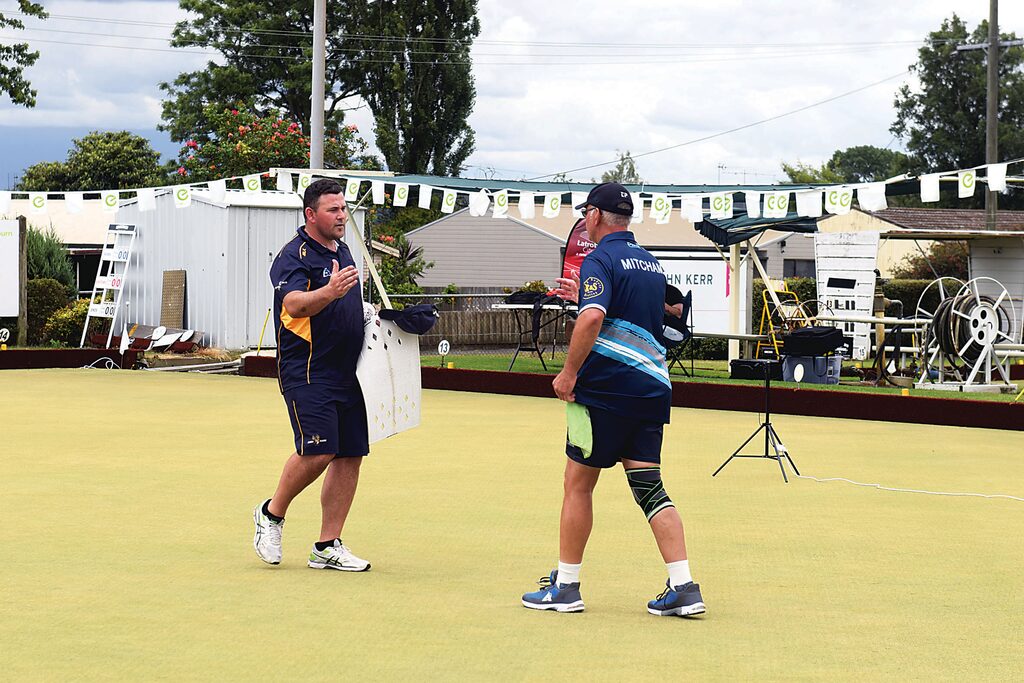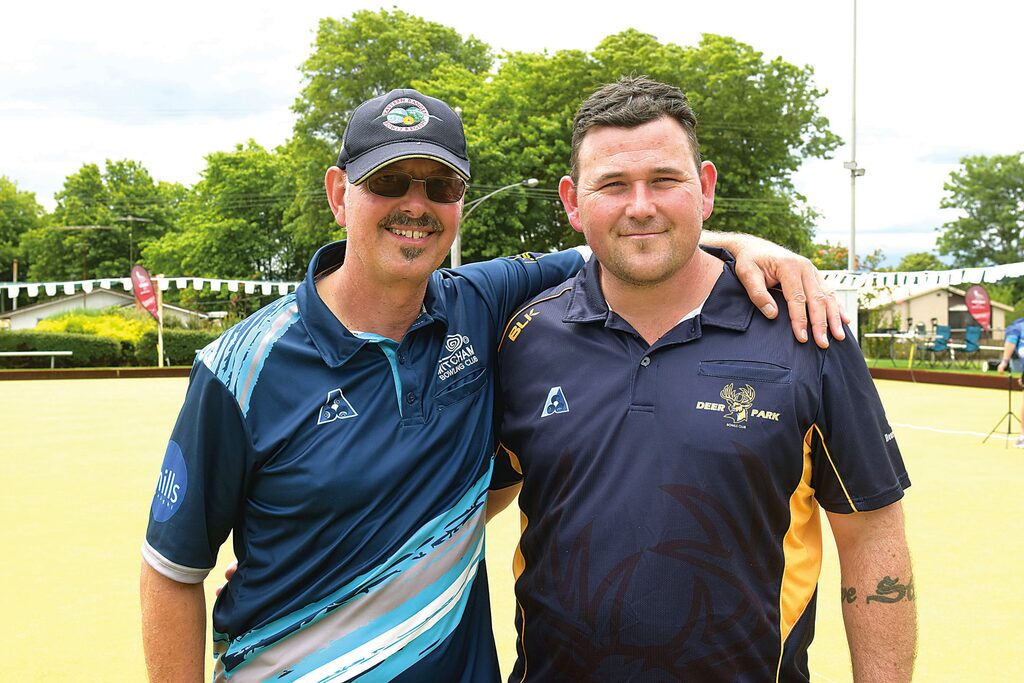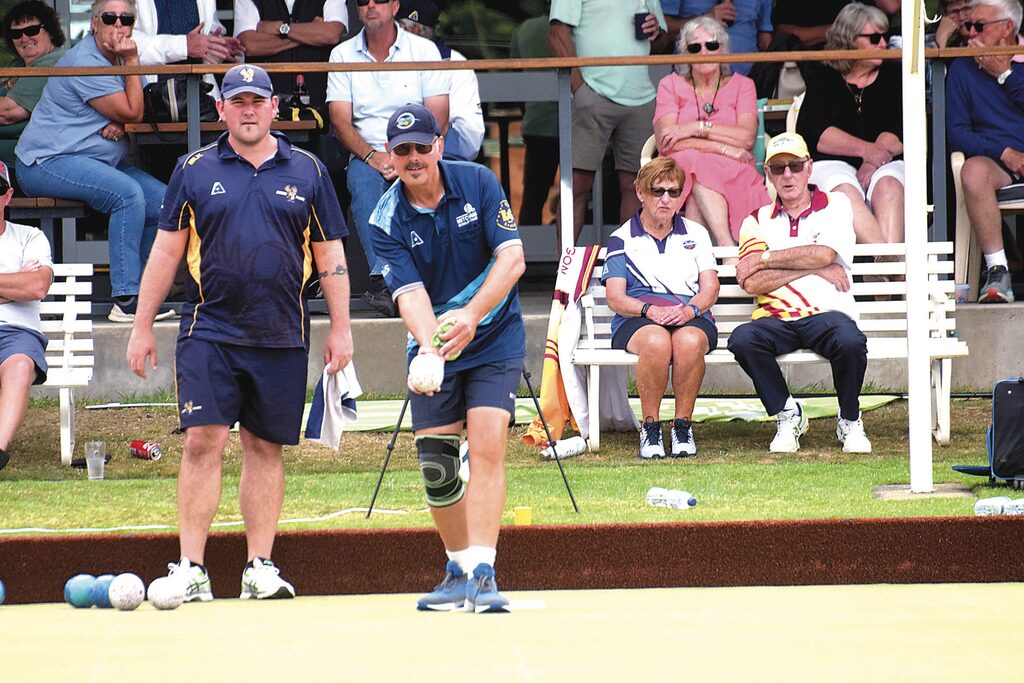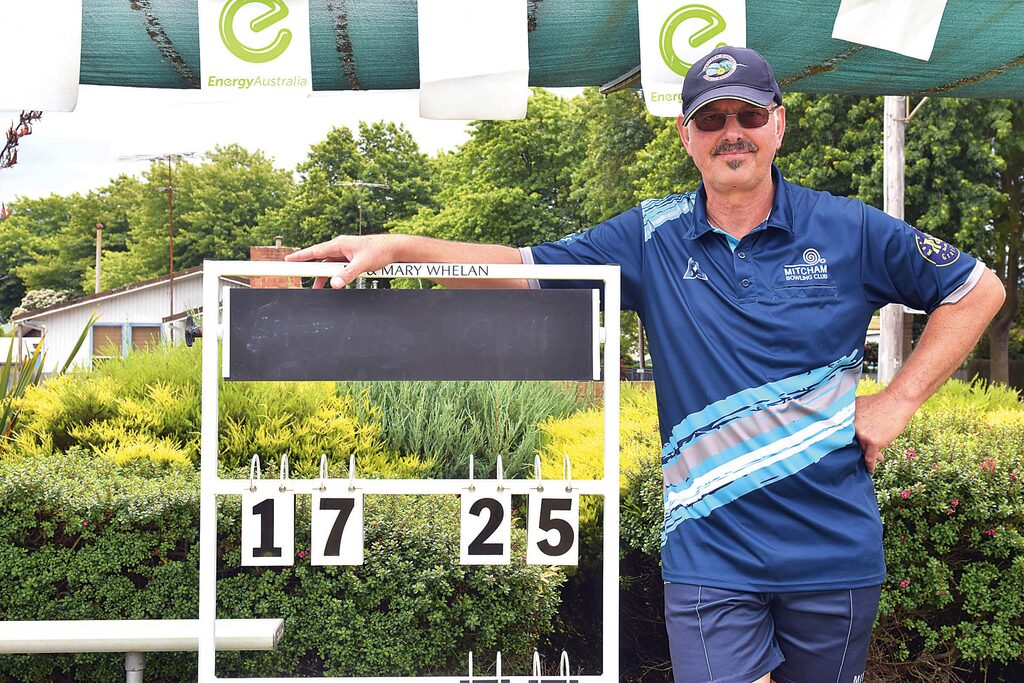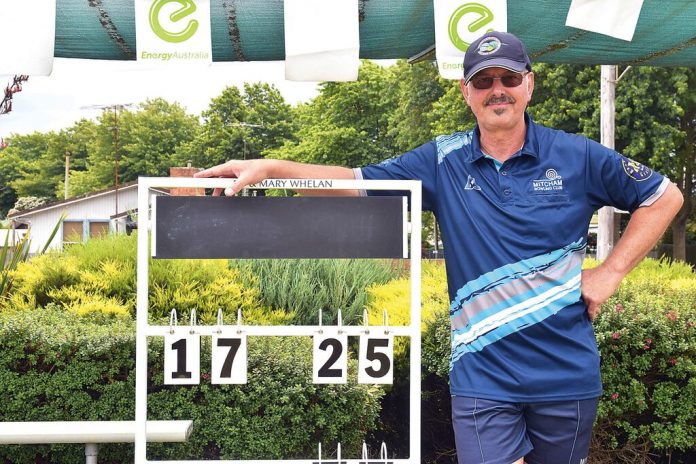
LIAM DURKIN
BOWLS
CLASSIC SINGLES By LIAM DURKIN SLOW and steady wins the race. There was a seemingly unlikely winner in this year’s Energy Australia Classic Singles final at Newborough Bowling Club, as little-known Colin Veenendaal of Mitcham took out the title. A methodical Veenendaal defeated Deer Park’s Nathan Bush 17-25, breaking away late to eventually seal victory. The field for the tournament included Commonwealth Games athletes Ali Forsyth and Kelly McKerihen, making Veenendaal’s victory a true win for anyone who loves an underdog. While understandably ecstatic with his achievement, Veenendaal was visibly stunned by how well he performed, openly admitting he is “just an average bowler”. “You always want to win whatever you play, but just to actually win against some really good opposition, guys that have played at the top level, and I am not a top-level bowler… I’m ecstatic, I’ve been playing for 17 years and probably seriously for the last 12,” he said. “I’ve played (in the Classic Singles) about seven times. First three times I didn’t even get through my section, and then I got through a couple of games; fifth year I got to the quarter, and then I got to the quarter again and now this year I’ve gone all the way.” His opponent for last Thursday’s final did remarkably well to get as far as he did. Bush came back from 11-0 down against Forsyth in the semi before taking to the green that same day for the decider. Bush may well have played his Grand Final there and then, as he struggled to keep up with Veenendaal for large parts of their match. When Veenendaal took a 17-12 lead, it looked to be one way traffic to the magical 25 needed for victory. When the score was 21-14, it appeared a foregone conclusion. However, Bush refused to surrender and fought admirably, getting three points back in one end to close the gap 21-17. Veenendaal stayed calm, and managed to place his bowls around the jack in such a way Bush was, in 8-ball parlance, ‘snookered’. There was nothing more Bush could do from that point. The combatants shook hands, said ‘good game’, and headed to the bar for a beer. Veenendaal’s decision to play within his limitations paid off in the end, and he smartly got the percentages in his favour against the more versatile Bush. “I haven’t got the skills that these guys have got, they can do everything, I can only just draw and play a few up-shots, not the big drives that they do,” he said. “How Ali drives, he doesn’t muck around, if he sees something – ‘bang’ he just kills it, hits it, smashes it, I don’t play that sort of game, I just draw the shot and hope to hold it, sometimes it gets knocked away but you just draw another one and keep doing it. “He (Bush) probably played better against Ali than he did against me. Sometimes when you are playing any sport you think ‘this guy is so much better, I have to play so much better’ – you don’t. You just have to be consistent, put bowls in their head and put pressure on, sometimes people crack and sometimes they try shots that they probably don’t need to play, and in the end you can still win.” It was this consistency that served Veenendaal so well, while another aspect inadvertently also gave him some advantage. “It didn’t worry me whether I won or lost, there was really no pressure on me,” he explained. Technically speaking, Veenendaal was quite methodical with each shot, carefully taking his time before rolling every bowl down the green. He played not necessary the best bowls shots, but rather the best shots for him. “I felt like I didn’t change my game plan at all, I was rolling from the tee to three-quarters, just under, he was trying to change lengths, he tried everything to put my game off, but I play long all the time,” Veenendaal said. “I could have gone long if I wanted to do but I thought ‘no, I’m just going to do a nice, easy, not hard to play shot’. “If you go ditch-to-ditch on this the end bits are really quick, you can be a metre over and instead of finishing near the edge, it just ends up in the pit, so you put yourself under a lot of pressure.” Having been runner-up in bowls tournaments before, Veenendaal paid tribute to Bush, as well as all who took part in the Classic Singles. “Nathan is a good player. I would say it took a lot out of him the previous game mentally, I felt I was maybe a little bit lucky, my game probably wasn’t as hard as his,” he said. “The precision that they were bowling at and the level they were bowling at took a lot out of them. I don’t know how Ali would have gone in the final. “Everyone that played, even if you didn’t get through your section, there is some terrific players that lost. “If you come up against Nathan Bush or Ali Forsyth first round you are going to have a lot of trouble – they are looking to get to a final.” The newly-crowned champion also wished to acknowledge Newborough Bowling Club head curator Scott Jones, for preparing what he described as “beautiful” greens. Classic Singles chief organiser Michael Holroyd oversaw another successful tournament. Now into its 26th year, the four-day tournament looks set to stay as a staple local sporting event to bring in the new year. “One of our best ever, we had a very good run with the weather,” Holroyd said. “Excellent bowling in the finals, maybe Nathan Bush wore himself out in the morning where he had to play extremely well to beat the New Zealand champion Ali Forsyth. “We had five of our club members make it through their section day, and four of them made it through one round of knockout, so that is pretty good for our locals. “I think our field was strong. The last 32 players were very competitive.” From here, Veenendaal will continue to put his name forward to play in high profile tournaments across the state, and will surely be one of the first asked back to Newborough to defend his title. Having played at Mitcham his whole career, Veenendaal belongs to the almost extinct class of ‘one-club player’. As good as winning the Classic Singles was, he said there was still ultimately one thing left he wanted to achieve in bowls. “What I’d like to do is win a pennant flag for Mitcham, I’d love to do that,” he said. Note how he said ‘for Mitcham’, and not ‘at Mitcham’. You can tell a lot about club culture simply by language.